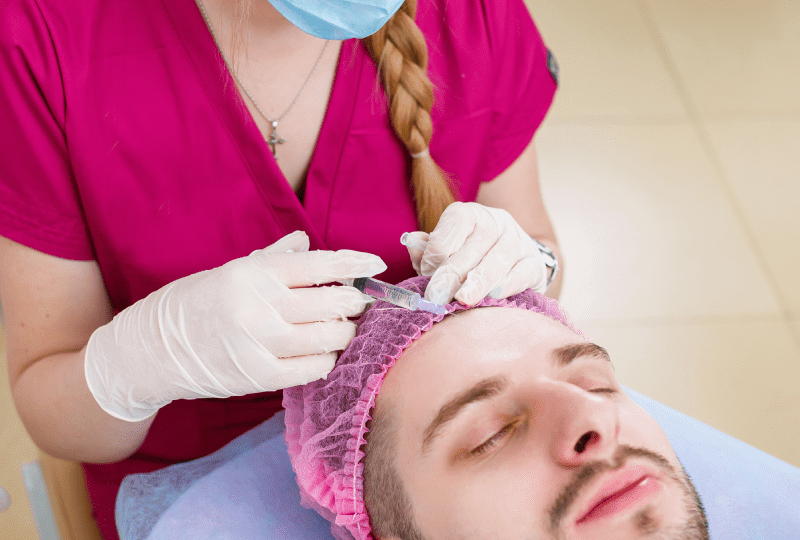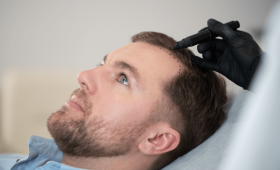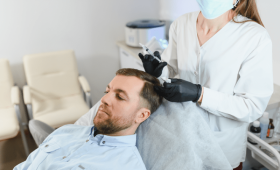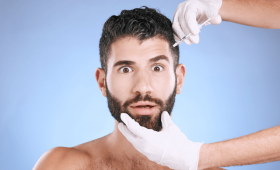Why Is Hair Transplantation So Popular In Istanbul?
Istanbul has become a worldwide center for hair transplantation because both experienced teams and state-of-the-art equipment come together at a high standard. Clinics and centers in the city hold international accreditations and provide services in modern facilities designed to meet patient expectations. Furthermore, Turkey’s competitive pricing policy in general healthcare offers much more affordable costs compared to similar quality procedures in Europe and other countries. The combination of these factors has made Istanbul the number one destination for international patients seeking natural and successful results. This intense demand also continuously increases the experience level of the teams operating here.
Which Is The Best Hair Transplant Technique?
While the “best” hair transplant technique varies from person to person, the most common and successful methods accepted today are FUE (Follicular Unit Extraction) and DHI (Direct Hair Implantation). FUE is ideal for application to large areas and the transplantation of a high number of grafts in a single session, with minimal risk of scarring. DHI allows for denser implantation and is preferred for filling gaps between existing hairs, sometimes offering the possibility of unshaven transplantation. Which technique is most suitable for you should be clarified after a detailed analysis by an expert team, based on your hair loss type, donor area capacity, and expectations.
How Is The FUE Method Applied And What Are Its Advantages?
The FUE method is based on the principle of extracting hair follicles (grafts) one by one from the donor area (usually the nape) using special micromotors or manual punch tools under local anesthesia. These extracted grafts are then placed into micro-channels opened in the recipient area. The biggest advantage of this method is the absence of stitches or large scarring, as no scalpel is used. Additionally, the recovery process is quite short, allowing patients to quickly return to their social lives. Its ability to enable the transplantation of high graft numbers in a single session makes FUE an attractive option, especially for patients with extensive baldness.
What Is The Main Difference Between The DHI Technique And FUE?
The fundamental difference between DHI and FUE is whether the channel opening and graft placement stages are combined or separate. In FUE, after the grafts are collected, micro-channels are opened in a separate stage, and then the grafts are individually placed into these channels. In contrast, the DHI technique uses specially designed Choi (implanter) pens. These pens hold the grafts and simultaneously open a channel in the recipient area and place the graft in a single motion. This process can potentially increase the viability rate of the grafts by reducing their time spent outside the body. Furthermore, DHI is generally the preferred method when denser implantation is required in smaller areas and among existing hairs.
What Preparations Should Be Made Before Hair Transplantation?
Before the hair transplant operation, some important preparations are necessary to support successful results. It is recommended to completely stop alcohol and cigarette consumption at least one week before the procedure, as these can negatively affect the healing process and the effect of anesthesia. Medications that thin the blood, vitamins (especially B and E), and herbal teas or supplements must be discussed with the specialist and stopped if necessary. Comfortable clothing should be chosen on the day of the operation, and breakfast should be eaten. Furthermore, it is important that the area to be transplanted is clean and free of any chemical products in the hair. Adhering to all these details will contribute to the comfortable progression of the operation.
What Should I Expect On The Day Of Surgery?
The day of hair transplant surgery typically consists of several stages, and the time spent at the center can extend up to eight hours. The day begins with a detailed consultation and hairline design; this stage ensures your expectations are clearly defined with the expert team. Next, local anesthesia is applied to the donor and recipient areas, and the sensation of pain largely disappears after this stage. Following local anesthesia, the stages of graft harvesting, channel opening, and finally, graft implantation are performed sequentially. The entire process is supported by short breaks for the patient’s comfort; during these breaks, you can eat or rest. At the end of the day, the transplanted area is dressed, and post-operative instructions are explained to you in detail.
How Long Is The Recovery Process And What Should I Pay Attention To?
The recovery period for hair transplantation is typically critical during the first fourteen days. It is vital not to touch the transplanted area, avoid contact with water, and protect the area against impact for the first 48 hours. Lying on your back in an elevated position on the first night helps prevent swelling and pressure. During the first week, accessories that constrict the head, such as hats, beanies, or helmets, must be strictly avoided. The scabs in the recipient area should be allowed to fall off naturally and must not be scratched under any circumstances. The lotions and shampoos provided by the expert team should be used exactly as prescribed. Complete recovery and strengthening of the hair roots can take between six months and one year, but adhering to these basic rules will directly impact the success rate.
When And How Is The First Washing Procedure Performed?
The first washing procedure is usually performed on the third day after the operation, under the supervision of the expert team at the clinic or center. This wash is a critical step for gently cleaning the sensitive transplanted area and supporting healing without damaging the grafts. During the process, a special lotion is applied to the recipient area to create a softening effect; this helps to loosen the blood clots and scabs on the area. Afterward, using another special medical shampoo, lathering and rinsing are done with very light pressure, avoiding direct contact with the fingertips. For subsequent washes after this first wash, it is important to use the same gentle motions and avoid high-pressure water.
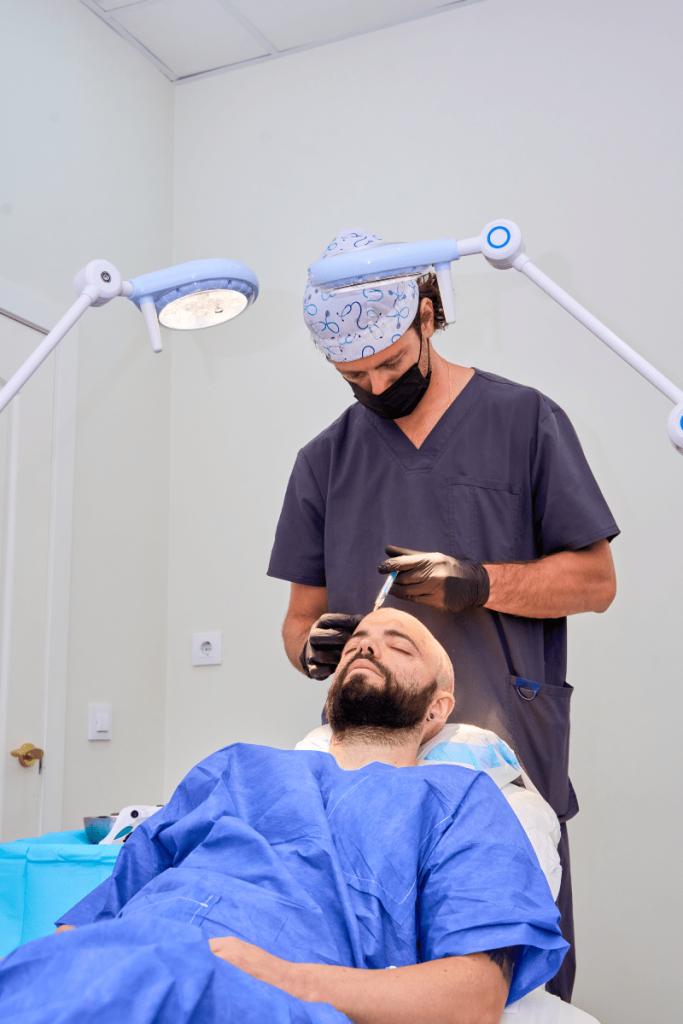
What Is Shock Loss And When Does It Start?
Shock loss is the temporary shedding of transplanted hair strands that can occur from the second to the eighth week after the hair transplant operation. This condition is an entirely expected and normal process due to the hair follicles entering the resting phase (telogen phase) from the stress caused by the transplantation procedure. Patients do not need to worry because only the hair strand sheds, and the roots remain under the skin. Following shock loss, the roots become active again within approximately three months, and permanent new hairs begin to grow. This stage is considered one of the first signs that the hair transplant has been successful.
How Long Does It Take For New Hair To Fully Grow Out?
While the time it takes for transplanted hair to fully grow and reach the desired final result varies from person to person, it generally covers a period of twelve to eighteen months. The first three months involve shock loss and the resting of the roots. By the fourth month, thin, fuzzy hairs begin to appear. By the sixth month, a significant portion of these hairs thickens and becomes prominent; patients may see about half of the final results during this period. The hair continues to mature and densify from the ninth month onward. The final and most natural appearance is achieved after the twelfth month. Patience and adherence to the specialist’s advice are of great importance during this process.
Can A Natural Appearance Be Achieved After Hair Transplantation?
Yes, achieving a natural appearance is the most important goal in hair transplant operations, and this is largely possible with modern techniques. The key to naturalness begins with hairline design being customized to suit the patient’s face shape, age, and frontal muscle structure. Furthermore, the angles and directions of the implanted grafts must match the angle of the original hair growth, meaning they should be implanted at angles close to zero. Placing single grafts at the front line and multi-grafts towards the denser back areas also creates a natural transition. Experienced teams pay attention to these details, yielding results where the transplanted hair is difficult to distinguish from the natural hair.
How Is The Graft Count Determined And What Is Its Importance?
The graft count is determined by considering a variety of factors, such as the severity (extent) of the patient’s hair loss, the density of the donor area, and the patient’s expectations. A graft is not just a single hair strand but a root unit containing 1 to 4 hair strands. The expert team first calculates how much area the recipient site requires. They then evaluate the density and potential of the donor area. Correctly determining a sufficient and healthy number of grafts is vitally important both for ensuring adequate density in the recipient area and for preventing damage to the donor area. Taking too many grafts can thin the donor area, while insufficient grafts will not yield the desired result.
Is Pain Or Discomfort Felt During The Operation?
Since the hair transplant operation is performed under local anesthesia, patients generally feel no pain or discomfort during the procedure. The most uncomfortable part of the operation is the first few minutes when the local anesthetic injections are applied; however, this is a brief situation. Today, some centers aim to minimize this initial discomfort by using needleless anesthesia devices. Once the anesthesia takes full effect, the patient only senses feelings like touch and pulling, but the pain sensation disappears. During the procedure, patients can often listen to music, read a book, or watch a movie to pass the time comfortably.
How Many Hours Does The Hair Transplant Operation Last?
The duration of the hair transplant operation varies depending on the number of grafts to be transplanted, the technique used (FUE or DHI), and the structure of the patient’s donor area. Generally, an average operation lasts between six and eight hours. During this period, the stages of graft harvesting, channel opening, and implantation are carried out. The reason why the operation takes so long is that each graft needs to be collected one by one and placed at the correct angles with extreme precision. Rest and meal breaks are included in this long process to ensure the patient’s comfort, thus attempting to reduce patient fatigue.
What Are The Accommodation And Transfer Opportunities Like In Istanbul?
Many hair transplant centers in Istanbul offer comprehensive packages aimed at international patients, and these packages typically include accommodation and transfer services. Patients are usually accommodated in comfortable hotels located close to the clinic. Transfers between the airport, hotel, and clinic are provided by private vehicles or VIP minibusses, minimizing the patients’ stress regarding city transportation. The goal of these services is to allow the patient to focus solely on their recovery throughout the entire process. Thanks to these arrangements, it is possible to complete the treatment without language barriers and without worrying about finding their way around the city.
When Can I Start Exercising After Hair Transplantation?
The time to start exercising after a hair transplant varies according to the type of sport performed, and it is generally important to progress gradually. During the first 7-10 days after the procedure, strenuous exercises that could damage the grafts, cause sweating, or increase blood pressure in the scalp must be strictly avoided. Only short, slow-paced walks can be taken during this period. Strenuous sports like weightlifting, running, or football, which can cause heavy sweating and pose a risk of head trauma, are generally safe to resume one month after the operation. For activities that carry a risk of infection, such as swimming, it is recommended to wait at least one and a half months before contact with pool or sea water.
How Important Is Protection From Sun And Water?
Protection from the sun and water is vital for the success of the hair transplant recovery process and the final result. The transplanted area is extremely sensitive to the sun for the first few months after the operation; exposure to direct sunlight can damage the newly implanted roots and cause permanent skin discoloration. Therefore, it is essential to use a wide-brimmed hat and avoid direct sun exposure for the first two months. Sea and pool water carry a risk of infection and can negatively affect graft survival. For this reason, contact with salt or chlorinated water must be strictly avoided for the first month. Even when showering, it is recommended to use lukewarm water instead of hot water.
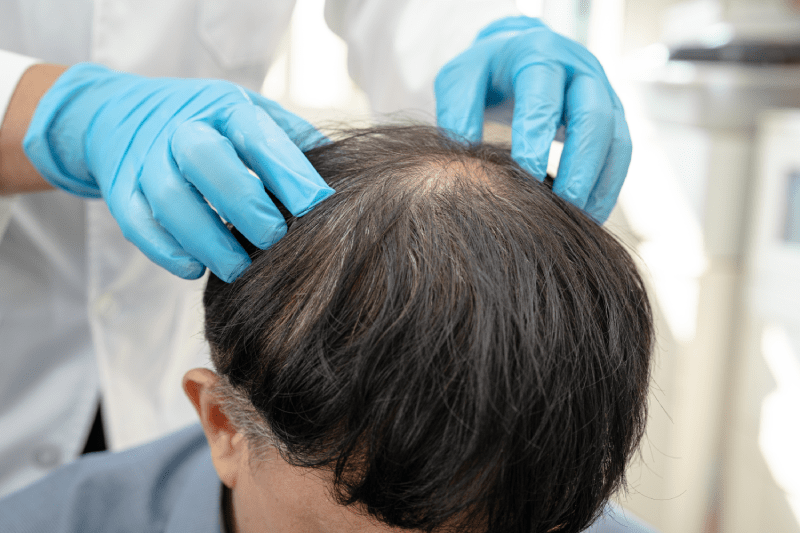
Which Is The Most Suitable Season For Hair Transplantation?
While there is no definitively determined “most suitable” season for hair transplantation, every season has its own advantages and disadvantages. Many people prefer the spring and autumn months because the recovery process is generally easier to manage. In winter months, the risk of sun exposure is low, but the necessity of wearing a beanie might cause problems in the first few days. Summer months require a little more caution due to the obligation to protect from the sun and heavy sweating during the healing process. What matters most is the patient’s discipline in adhering to the specialist’s instructions, such as sun protection, hygiene, and sports restrictions, regardless of the season. Therefore, adherence is more important than the season itself.
Who Is Not A Suitable Candidate For Hair Transplantation?
Hair transplant surgery may not be suitable for everyone, and certain health conditions or hair loss types can restrict candidacy. For example, individuals with chronic health issues such as uncontrolled diabetes, serious heart conditions, or blood clotting disorders are not suitable candidates due to the risks of the operation. Furthermore, it is difficult to achieve successful results in individuals whose donor area is not dense and healthy enough, meaning insufficient grafts can be harvested. Young patients with diffuse hair loss (alopecia) whose balding level has not yet stabilized are also generally deemed unsuitable. The assessment of these conditions and the decision for surgery must be made after detailed blood tests and a medical examination by a doctor.
Can Grafts Be Taken From The Beard Or Body?
Yes, especially in situations where the hair density in the donor area (nape) is insufficient or a very large area needs to be transplanted, it is possible to take grafts from the beard (especially the area under the chin) or other body parts (chest, back). This is known as Body Hair Transplantation (BHT). Beard hairs are generally thicker than nape hairs, making them effective in creating a sense of density, and they typically contain only single grafts. Body hairs, on the other hand, are thinner and grow slower. These reserve grafts are usually used to increase density in balding areas at the back, rather than for achieving a natural look at the hairline. The expert team plans the procedure by considering the characteristics and adaptability of these hairs.
What Should Be Done If The Hair Transplant Fails?
A failed hair transplant can often result from factors such as incorrect angle of implantation, insufficient density, or overuse of the donor area. In such a situation, the first thing to do is to consult an expert team to understand why the operation failed. An experienced team can evaluate the situation and recommend a second “correction (revision)” operation. This revision procedure, incorrectly oriented grafts can be corrected, density can be increased, or the appearance of a damaged donor area can be improved. Every revision operation requires careful planning, and the remaining graft potential in the donor area must be utilized most efficiently. It should be remembered that a second procedure is always possible but requires specialized expertise.
Why Is Hairline Design A Critical Stage?
Hairline design is the most important artistic and technical stage of the hair transplant operation because it directly determines the natural and aesthetic appearance of the final result. A correctly designed hairline must be compatible with the patient’s facial features, the movement of the frontal muscles, and their age. A line that is too straight, too pointed, or unnatural can make the transplant easily noticeable. When drawing this line, the expert team takes care to mimic the patient’s natural hair growth direction and zig-zag pattern. A successful design makes the person look rejuvenated and natural, while a failed design can result in the entire operation having an unnatural appearance.
When Can I Return To My Sexual Life After Hair Transplantation?
The time to return to sexual activity after a hair transplant depends on individual recovery speed and the general course of the operation, but it is generally recommended to be cautious for the first 5 to 7 days. Sexual activity can increase heart rate and consequently the blood pressure in the scalp; this could theoretically increase the risk of the newly implanted sensitive grafts shifting or bleeding. Furthermore, since the scalp must be protected against physical impact and sweating in the first week, utmost care must be taken to ensure the head does not receive any impact during any activity. Specialists usually state that less strenuous activities can be resumed after a few days, but contact should be completely avoided.
How Does The Process Work For Patients Coming From Abroad?
Centers in Istanbul offer comprehensive “all-inclusive” packages that simplify the entire process for patients coming from abroad. The process usually begins with an online consultation, where the hair loss is analyzed, and the appropriate treatment plan is determined. After the patient approves, they make their flight plans. The clinic generally arranges airport transfers, comfortable hotel accommodation, and post-procedure follow-ups. Upon arrival in Istanbul, the patient undergoes the operation, followed by the first wash and check-up. The entire medical process and communication are typically conducted through interpreters who speak the patient’s native language, ensuring the patient is never alone at any stage.
What Factors Determine Hair Transplant Prices?
Hair transplant prices are determined by various factors rather than a single fixed fee. The most determining factors include the technique used (FUE, DHI), the estimated number of grafts to be implanted, the experience of the performing team, and the additional services provided by the center (accommodation, transfers, PRP treatment, etc.). Higher graft counts mean longer operations and more resource requirements, which can increase the cost. Additionally, the standard of hygiene and technology offered by the center and the quality of international patient services play a significant role in pricing. In summary, prices generally vary based on the scope of the service package provided.
What Medications Or Supplements Should Be Used After Surgery?
After the hair transplant operation, a range of medications and supplements are prescribed by the expert team to accelerate healing, prevent infection, and support the newly growing hair roots. These generally include painkillers (for the first few days), antibiotics (to reduce the risk of infection), anti-swelling agents (to help reduce edema), and sometimes hair growth-supporting vitamin/mineral supplements or special lotions. All medications and supplements must be used only upon doctor’s advice and at the specified dosages. Consistent and correct use of antibiotics and painkillers, in particular, minimizes the risk of complications and supports the healing process.
When Do The Scabs That Form In The Transplanted Area Fall Off?
The scabs that form in the transplanted area begin to shed gradually through a regular washing procedure lasting from the seventh to the tenth day after the operation. These scabs are composed of blood clots and dead tissue remnants and are a natural part of the healing process where the newly implanted grafts anchor. It is crucial to be patient and strictly avoid scratching with fingernails or forcibly removing the scabs to allow them to fall off naturally. By the tenth day, most, if not all, of the scabs are expected to have shed due to the gentle washing with special lotions and shampoos. The complete cleaning of the scabs is important for both the aesthetic appearance and for the hair roots to breathe and heal quickly.
Can A Second Hair Transplant Be Necessary?
Yes, in some cases, a second hair transplant (a second session) may be necessary. There are several reasons for this. The most common reason is that the density achieved in the first operation did not fully meet expectations or that new thinning areas have appeared in non-transplanted regions due to the progression of hair loss. Hair loss is a progressive condition, and over time, the non-transplanted areas at the back may also thin out. For a second operation, it is generally recommended to wait at least twelve months after the first operation so that the final result of the initial transplant is fully visible. The second transplant is meticulously planned using the remaining graft potential in the donor area that was not damaged in the first operation.
What Should I Pay Attention To While Traveling?
When traveling immediately after a hair transplant operation, especially during air travel, several important points need attention. Firstly, it is important to carefully use the special band or hat provided by the team to prevent the transplanted area from being hit. Using a neck pillow is recommended to prevent the head from leaning back against the seat during a flight. Due to the dry air in the airplane cabin, care should be taken to drink plenty of water. Furthermore, heavy lifting or physically demanding movements should be avoided during the first few days, as such activities can increase blood pressure in the scalp and slow down recovery.
What Is The Biggest Mistake Made Regarding Hair Transplantation?
One of the biggest mistakes made regarding hair transplantation is disregarding post-operative instructions. Patients who engage in behaviors such as sleeping incorrectly on the pillow, accidentally touching the scalp, or violating alcohol or smoking prohibitions during the critical first ten days when the grafts are sensitive, can cause damage to the roots and decrease the success rate. Another major mistake is insisting on an unnatural hairline design; some patients may request a line that is too far forward and straight, which does not suit their age and facial structure. Not trusting the experience of the expert team and resorting to scientifically unproven methods can also lead to negative outcomes.
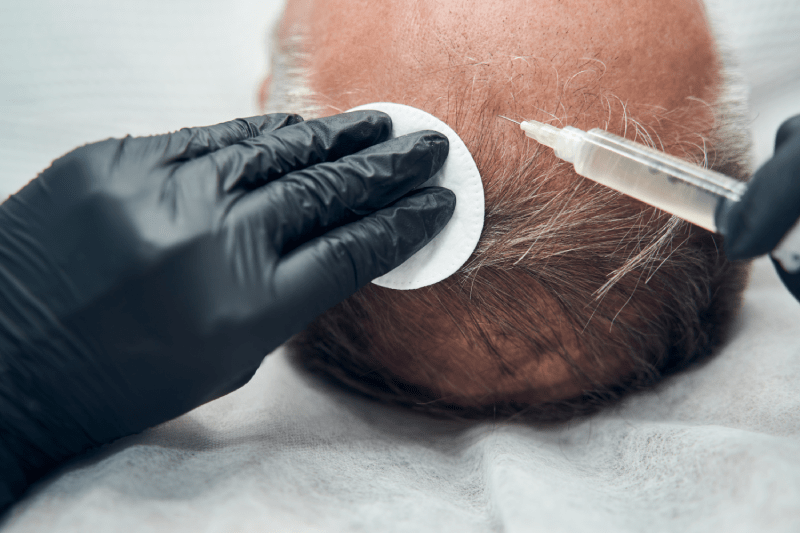
What Can Be Done To Thicken And Strengthen The Hair?
The thickening and strengthening of transplanted hair is generally a natural process that occurs within 6-12 months after the operation, but some additional treatments can be applied to support this process. One of the most common and effective methods is PRP (Platelet Rich Plasma) therapy. PRP involves injecting plasma, derived from the patient’s own blood and enriched with growth factors, into the scalp. This increases circulation and nourishes the roots. Additionally, the use of oral supplements that support hair health, such as biotin, zinc, and B vitamins, along with a healthy and balanced diet, can help the hair strands grow fuller and stronger.
What Is The Effect Of PRP Treatment On Hair Transplantation?
PRP (Platelet Rich Plasma) treatment is a supportive application frequently used to increase the success rate and quality of the hair transplant operation. This treatment involves taking a sample of the patient’s blood and processing it through a special centrifugation process to obtain plasma enriched with healing and growth-stimulating factors. This plasma is then injected into the scalp to both accelerate healing in the donor area and nourish the hair roots in the transplanted area, thus strengthening them. PRP is highly valued because it helps to shorten the shock loss phase of the hair roots and facilitates the growth of thicker, faster-growing hair strands.
How Should Long-Term Hair Care Be Managed?
Long-term hair care after a hair transplant is important for maintaining the health of both the transplanted hair and the existing hair. After one year, the transplanted hair begins to behave just like your permanent, natural hair; thus, it does not require special care. However, to prevent further hair loss and improve hair quality, it is recommended to use gentle shampoos that are free of sulfates and parabens. Furthermore, the use of doctor-controlled medications or lotions (such as Minoxidil or Finasteride) to slow down hair loss can be beneficial. Avoiding tight hair ties, harsh chemical treatments, and excessively hot styling tools will help maintain the health of your hair in the long run.
What Are The Rules For Shaving After Hair Transplantation?
The rules for shaving after a hair transplant are quite strict to avoid damaging the implanted roots. For the first month, the transplanted area must absolutely not be touched by a razor, scissors, or clippers. During this period, only the donor area (nape) can be very carefully trimmed with scissors after 15-20 days. Even after one month has passed, only the longest setting on the clippers (usually 3mm and above) should be used for the hair in the transplanted area. Shaving with a razor or zero-grade clippers is strictly not recommended until six months have passed, when the grafts are fully rooted and healed. Avoiding any sharp contact that could damage the roots during this time is vital for maintaining the success of the transplant.
How Can I Find Experienced Teams In Istanbul?
The most important step for readers considering a hair transplant in Istanbul is to research experienced teams that provide services at international standards and have a high success rate that best suit their needs and expectations. This research should not only focus on price but also include examining the team members’ certifications, years of experience, and the centers’ international patient feedback. Reviewing references, viewing before-and-after pictures, and requesting a detailed pre-consultation will also aid the decision-making process. The presence of an expert team guarantees correct hairline design, high hygiene standards, and comprehensive post-operative follow-up.
What Is The Total Cost Of The Hair Transplant Process?
The total cost of the hair transplant process is not just the operation fee; it usually includes additional services provided as a package. This cost often includes the operation itself, the number of grafts used, anesthesia, post-operative medications and special shampoos, PRP treatments, airport transfers, and 2-3 nights of accommodation. Additional requests from the patient, such as luxury accommodation or an extended stay, may alter the total price. Compared to procedures of the same quality in Europe or America, the costs in Istanbul are much more affordable, which is why it is frequently preferred by international patients. Therefore, it is important to clarify all the details of the package when obtaining a quote.
How Long Is The Donor Area Recovery Period?
The donor area (usually the nape), where the grafts are harvested, heals much faster than the recipient area after a hair transplant operation. Since FUE or DHI techniques are used, the tiny micro-holes in the donor area do not require stitches, and this area usually scabs over and heals completely within 7 to 10 days. Slight redness and scabbing may be seen during the first few days, but these scabs quickly shed with regular washing. Once healed, there is minimal thinning in the area where the grafts were taken; however, this largely becomes unnoticeable as the surrounding hair grows out. It takes approximately two weeks for the donor area to completely return to its former appearance.
When Is Smoking And Alcohol Consumption Allowed After Hair Transplantation?
A very strict approach must be taken regarding smoking and alcohol consumption after a hair transplant operation. Experts strongly advise completely abstaining from smoking and alcohol consumption for at least 10-14 days both before and after the operation. Alcohol acts as a blood thinner, which can increase the risk of bleeding during and after the operation, and can also prolong swelling (edema). Nicotine in cigarettes constricts the capillaries in the scalp, reducing the amount of oxygen and nutrients delivered to the newly implanted hair roots, negatively affecting the grafts’ survival chance. Adhering to this rule is crucial for healthy recovery.
Is The Hair Transplant Process Different For Women Than Men?
The hair transplant process for women differs from men due to the type of hair loss and donor area preference. Hair loss in women is often seen as thinning in the crown area (diffuse alopecia), while in men, hairline recession and vertex baldness are common. Furthermore, female patients usually do not want to shave their hair completely, so the DHI technique may be preferred, involving shaving only a small area in the donor region (partial shave) or no shaving at all. Hair transplant results in women often focus on filling gaps between existing hairs rather than achieving a significant density increase, and while the process is largely the same, aesthetic expectations differ.
What Type Of Anesthesia Is Used During Hair Transplantation?
Local anesthesia is standardly used in hair transplant operations. Local anesthesia numbs only the area to be operated on, and the patient remains conscious. This allows the patient to stay awake during the procedure, listen to music, or watch a movie. Thanks to this numbing procedure, performed by an anesthesiologist or experienced team, the patient does not feel any pain during both the graft harvesting and implantation stages. In recent years, needleless anesthesia devices (pressurized jet injection) have also become widely used to minimize the initial needle discomfort, which significantly increases patient comfort.
Is There A Risk Of Allergic Reaction And How Is It Managed?
The risk of allergic reaction in hair transplant operations is low, but reactions to local anesthesia medications or other sterilization materials used during the operation can rarely occur. To minimize these risks, a detailed medical history is taken from the patient before the operation, and all known allergies are recorded. Sensitivity to local anesthesia drugs, in particular, must be thoroughly investigated. During the operation, an experienced team must have all the necessary emergency equipment and protocols for quick and effective intervention in case of a possible allergic reaction. These preparations are vital for keeping potential risks under control.
When Should Hair Cutting Be Done After Hair Transplantation?
Hair cutting after a hair transplant must be postponed for a certain period to allow the implanted grafts to fully anchor and settle. For the first month, the hair in the transplanted area must not be cut, even with scissors. During this period, only the donor area (nape) can be very carefully trimmed using scissors after 15-20 days. After one month, the hair in the transplanted area can only be trimmed very gently with scissors. The use of powerful tools such as hair dryers, clippers, and razors in the transplanted area is recommended to be avoided for at least six months. It is advised to wait at least six months for completely free shaving and hair styling.
What Is The Definitive Success Rate Of The Treatment And What Is Guaranteed?
In hair transplant treatments, a success percentage is discussed based on the graft survival rate; this rate generally ranges between 90% and 98% in experienced teams. However, hair transplant results depend on many variables that differ from person to person, so it is not medically ethical for any center to guarantee one hundred percent success. What is guaranteed is that the operation will be performed according to the highest hygiene standards, by an experienced team, and using the latest technology. The success rate largely depends on the quality of the donor area, how strictly the patient adheres to post-operative instructions, and their general health condition.
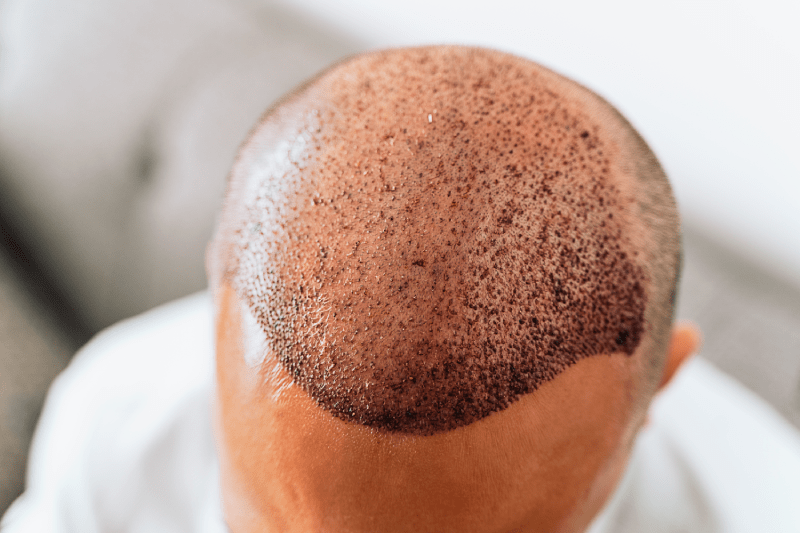
What Shampoos Should Be Used After Hair Transplantation?
Shampoos used after a hair transplant should be formulated to avoid damaging the sensitive implanted grafts and to support the scalp’s healing process. For the first two weeks after the operation, special pH-balanced, medical shampoos free of alcohol, parabens, and harsh chemicals, usually provided by the clinic or center, should be used. These shampoos help to soften scabs and reduce the risk of infection. Even after two weeks, it is recommended to continue using gentle, preferably sulfate-free, and natural ingredient shampoos. Ordinary, commercially available shampoos with harsh chemicals can irritate the newly implanted hair roots and negatively affect the healing process.
Is A Blood Test Necessary Before Hair Transplant Surgery?
Yes, performing a blood test before hair transplant surgery is absolutely necessary and mandatory. These tests are vital for evaluating the patient’s general health status and ensuring the operation can be performed safely. Blood tests check for the presence of contagious diseases such as HIV, Hepatitis B, and C. Additionally, blood clotting speed, blood sugar (diabetes control), and possible vitamin deficiencies are examined. These analyses are a prerequisite for ensuring the safety of both the patient and the surgical team, preventing potential complications, and correctly managing the anesthesia process. The suitability of the operation is confirmed based on the test results.
Can Massage Or Brushing Be Done After Hair Transplantation?
Great care must be taken regarding massage or brushing the scalp after a hair transplant. For the first 10 days, the transplanted area must not be touched, pressure must not be applied, and a brush must not make contact. This period is critical for the implanted grafts to fully settle and anchor to the scalp. From the tenth day onwards, very gentle massage can be performed using the fingertips in circular motions to help the scabs fall off. It is generally advised to wait one month for normal brushing or combing. Even after this period, using soft-tipped combs and brushes and avoiding pressure on the grafts is important.
What Are The Possible Complications That May Occur During The Recovery Process?
While hair transplant surgery is generally a low-risk procedure, some possible complications may occur during the recovery process. The most common ones include swelling (edema) in the transplanted area and forehead, slight pain in the donor area, and temporary numbness or itching of the scalp. Rarer but potentially serious complications include infection, the formation of acne (folliculitis) in the transplanted area, or delayed healing in the donor area. Experienced teams implement high hygiene standards and inform patients about regular medication use to minimize these complications. It is important to contact the expert team immediately in case of severe pain or fever.
When Does The Hair In The Donor Area Start To Grow?
The hair in the donor area, as it is shortened or shaved during the graft harvesting procedure, usually grows back quite quickly. By the end of the first month after the operation, the hair in the donor area will have visibly grown, largely concealing the sparse appearance caused by graft harvesting. The complete return of the hair in this area to its former length and density varies from person to person but generally takes 3 to 6 months. This rapid healing and growth in the donor area is an important advantage that allows patients to return to their daily lives and social appearance more quickly.
Is There An Age Limit For Hair Transplantation?
While there is no definitive upper age limit for hair transplant surgery, the lower age limit and general health condition are considered. Generally, it is suitable for individuals aged 20 years and older, where the hair loss pattern has started to stabilize and its progression has slowed down. For very young ages (18-20), as hair loss may not yet be fully stabilized, specialists usually advise waiting a period. The upper age limit depends on the person’s general health status and whether their chronic conditions are under control; individuals aged 70 and over can also undergo hair transplantation as long as their health permits. In summary, what is important is the quality of the donor area and the overall physiological condition rather than chronological age.
Can Eyebrow Or Beard Transplantation Be Done At The Same Time?
Yes, if the person’s donor area capacity is sufficient, other transplantation procedures such as eyebrow or beard transplantation can be performed in the same session as the hair transplant operation. This offers a great convenience in terms of time and cost, especially for patients coming from abroad who have a limited time frame. However, since such combined operations will prolong the operation time and require more focus from the team, the expert team may recommend different sessions if the number of grafts needs to be limited or if the procedure will take too long. Before planning a combined procedure, a detailed analysis must be performed to determine if the grafts in the donor area can meet this need.
This detailed set of questions and answers will provide you with a comprehensive understanding of the hair transplant process in Istanbul. To take all these steps confidently and to create the most suitable, personalized treatment plan for you, you can contact Cure Holiday. With their expertise in health tourism and the comprehensive packages they offer, they will make the entire process comfortable and stress-free for you.
